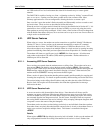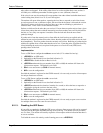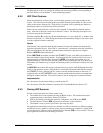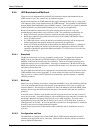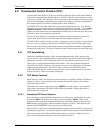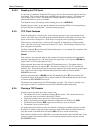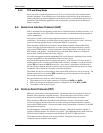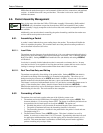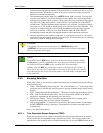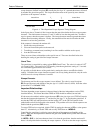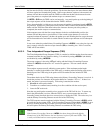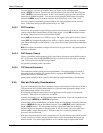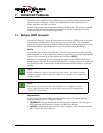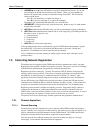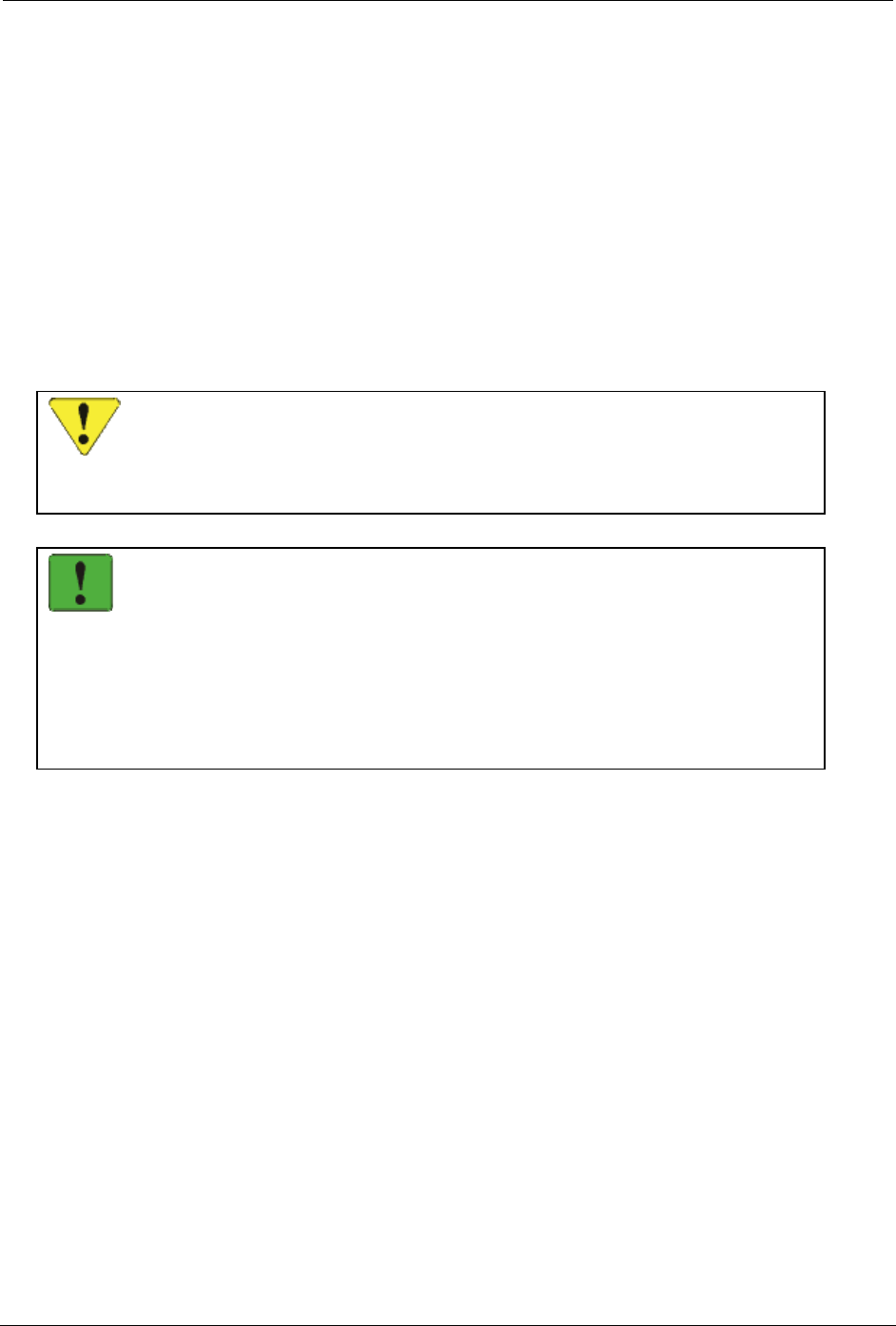
User’s Guide Protocols and Packet Assembly Features
2110212 Rev 1.0 Page 47
In most telemetry applications, the data is fed from the host in a stream with little or no delay
between characters. When there is a delay at the end of a stream, this setting can have the
modem close and forward the packet.
3. The maximum packet buffer length set in +WS74 (default 1000) is reached. You may wish
to set this value smaller if you are encountering too many packet errors and retransmissions.
Although larger packets reduce overhead, if large packets are being retransmitted, throughput
may improve by using shorter packets. Setting it below 5 will preclude use of the TIES to
exit data mode. The time dependent escape sequence is still available. See below for details.
The actual size of TCP packets transmitted may be less than the size of the PAD buffer. TCP
includes an exchange during the session opening handshake in which the largest expected
packet size is declared. If this size is less than the buffer length, the DART 300 will
automatically fragment the buffer into multiple packets to meet connection restrictions.
4. The time dependent escape sequence (guard time, +++, guard time) is received. The escape
characters are discarded and the packet is closed and sent. The modem then goes to command
state on-line condition, keeping the session open.
CAUTION
If you disable the primary forwarding character (+WS63=0) and the timer
(+WS70=0), the only practical way to forward packets will be to fill the packet buffer.
This is very strongly discouraged.
NOTE
Using DTR (with the &D2 setting) or the Time Independent Escape Sequence (TIES)
will discard any partially assembled packet. A partial packet will also be discarded if
the PAD Session Timeout (S30) expires with data still in the packet buffer.
If DTR is used with &D1, the partial packet remains in the buffer (not forwarded). If
the session is then closed, the packet buffer is discarded. If the local host goes back on-
line without closing the session, the partial packet is still in the buffer; subsequent data
will be appended.
6.6.3. Escaping Data State
When using a PAD service mode, the transition from data state to command state can be achieved
in the following ways:
• TDES – Time Dependent Escape Sequence. This is the traditional “+++” style escape using a
guard time before and after the escape characters to prevent accidental escape during a binary
transfer.
• TIES – Time Independent Escape Sequence. This does not require special timing by the host.
• DTR – Data Terminal Ready control line. An on-to-off transition of DTR can be used to
transition to command state and optionally close the session.
• PAD Session Timeout – There is a possibility that the modem will lose signal and/or
registration causing PAD sessions to timeout on inactivity.
• TCP closing handshake – Connections can be closed by the remote terminal. If this happens,
the NO CARRIER message is presented. The modem will close the session and revert to
command state.
Each is described in detail below.
6.6.3.1. Time Dependent Escape Sequence (TDES)
Where the local host device is capable of controlling the timing of data being fed to the modem,
the more traditional time dependent escape sequence can be used. This sequence requires that
transmit data to the modem be idle for a minimum guard time (set in register S12) followed by an



